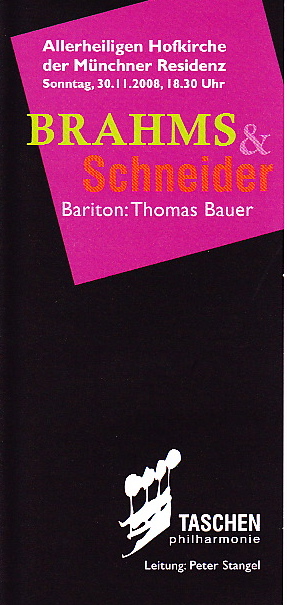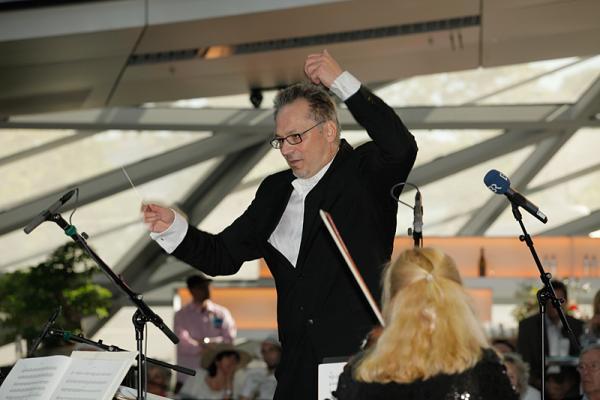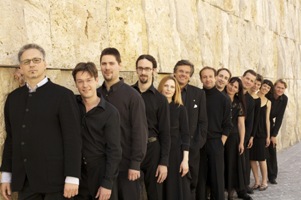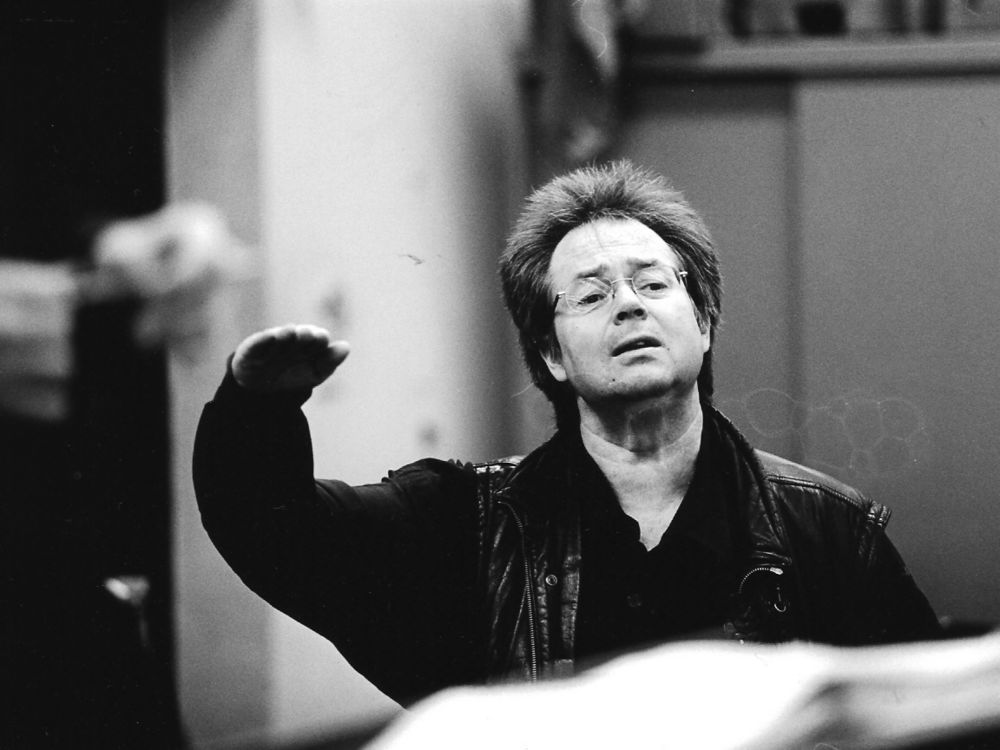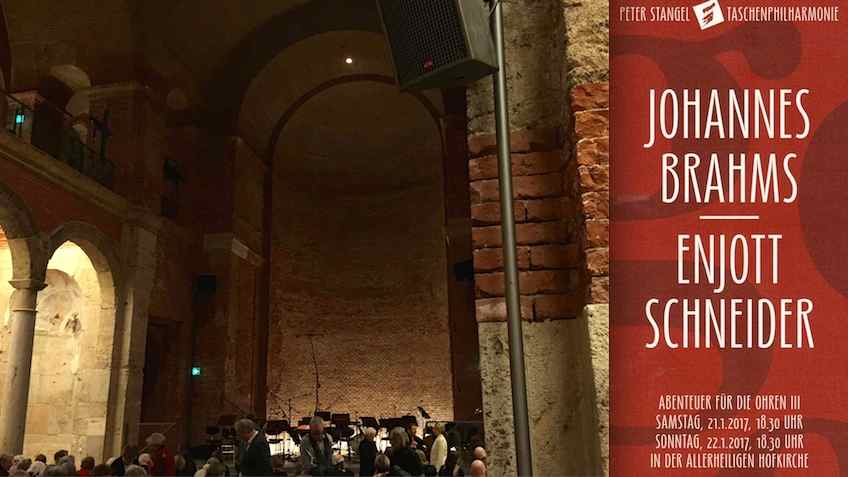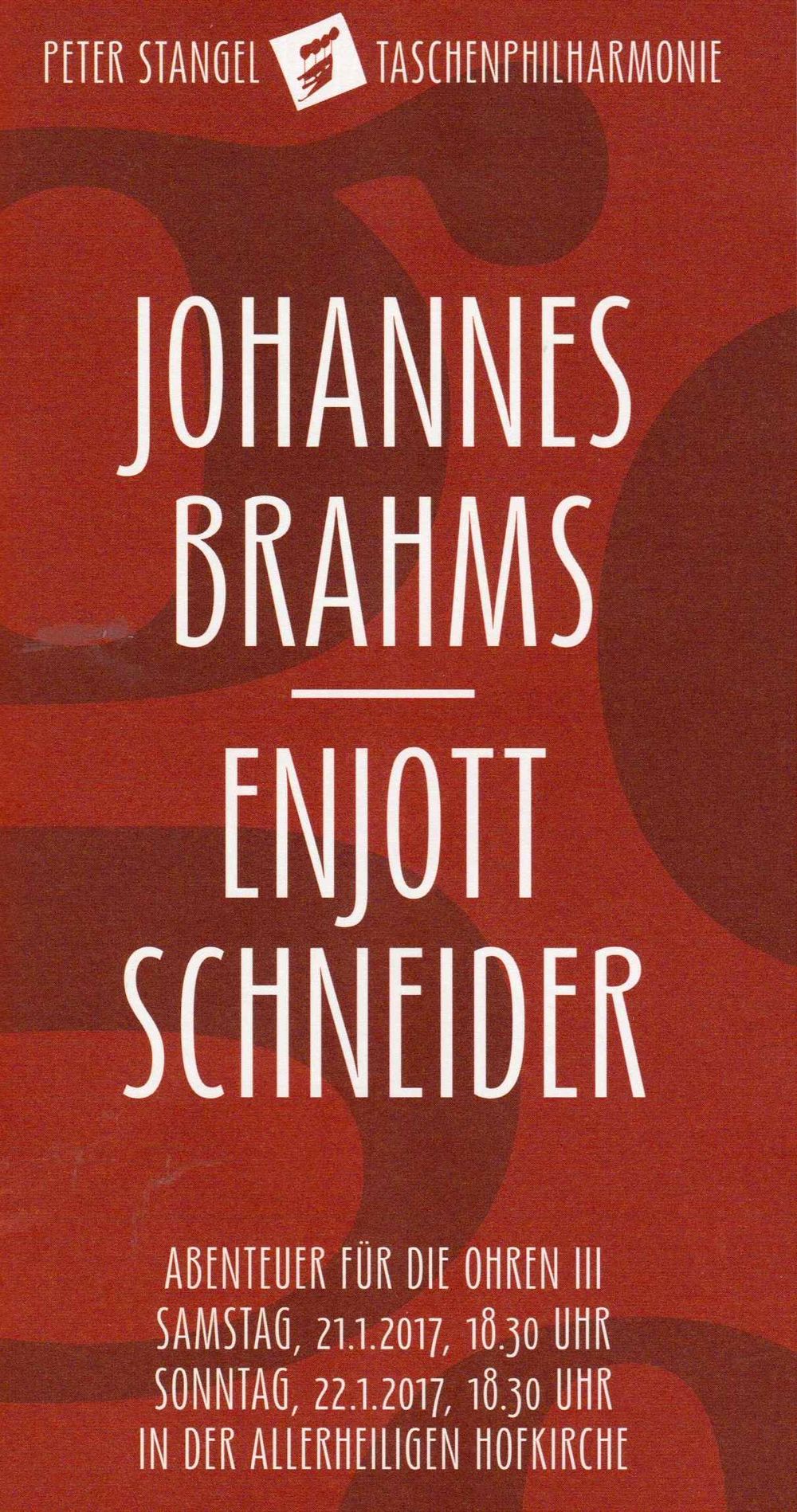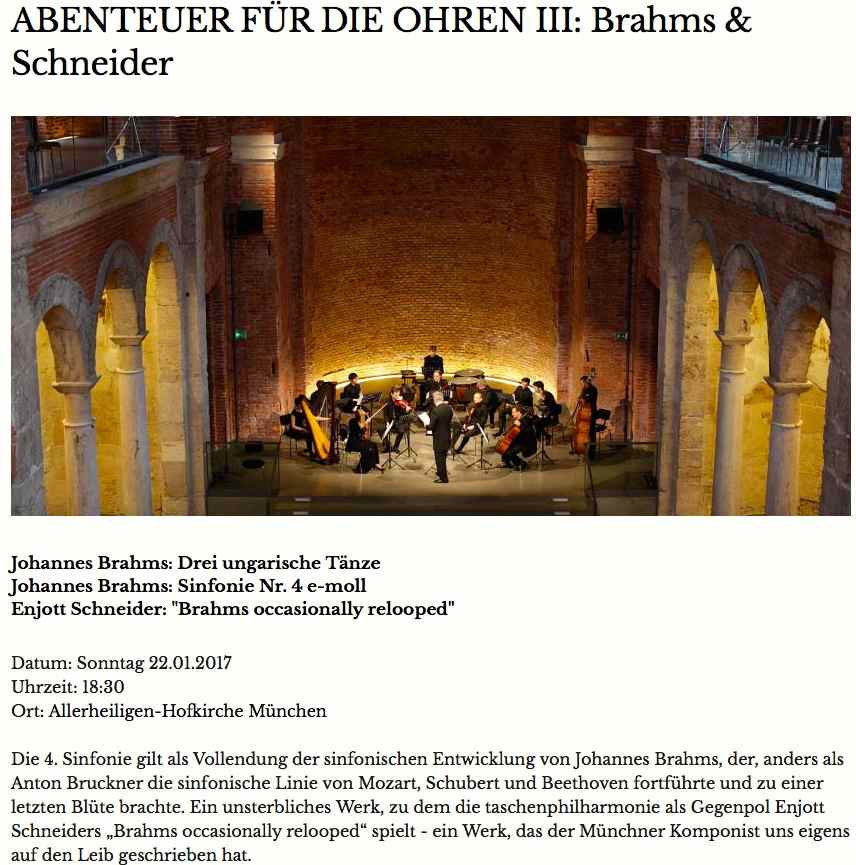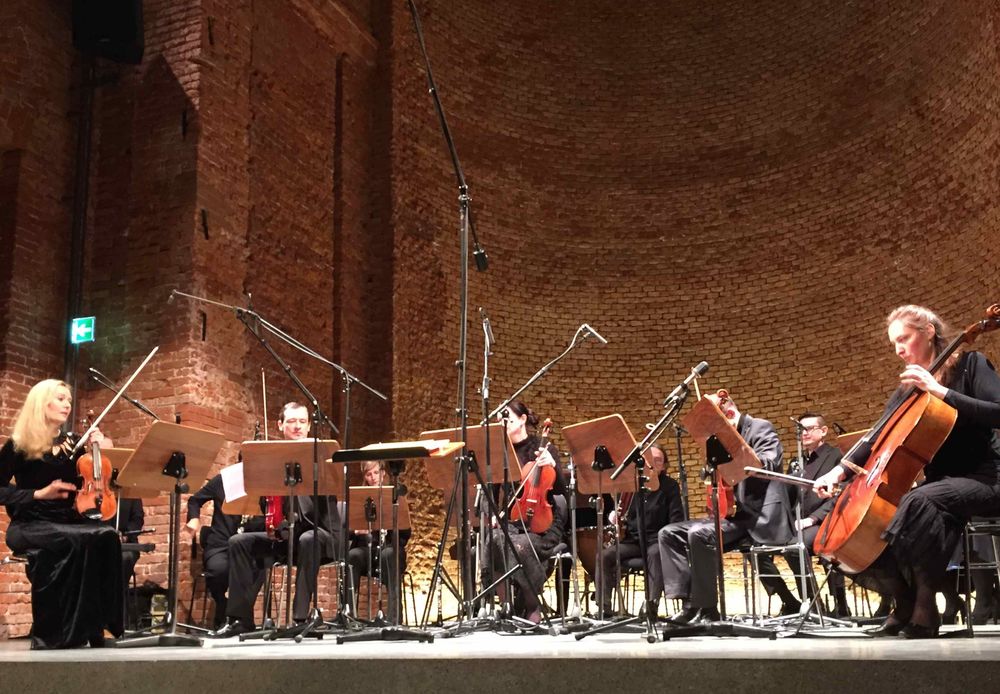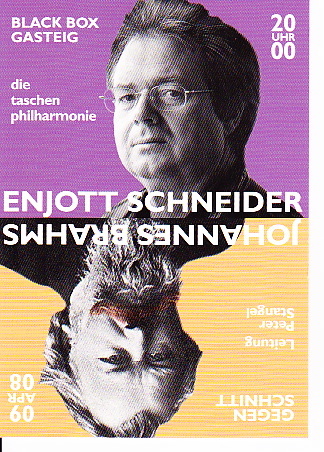
Category: Chamber Music , Symphonic / Orchestral
Duration: 10-11 Minutes
Instrumentation: 1 Flute (also Piccolo)
1 Oboe
2 Clarinets in B
1 Bassoon
1 French Horn (F)
1 Percussionist: with kettledrums (medium/deep), tomtom, triangle, small cymbal, bass drum (with pedal), snare drum, hi hat, crash-sheet, wood blocks, vibraphone ad libitum.
a) Sting orchestra
Vl.1, Vl.2, Vla, Vc, Db (as least 6-6-4-3-2)
b) Sting soloists
Vl.1, Vl.2, Vla, Vc, Db
Introduction: BRAHMS OCCASIONALLY RELOOPED is an amusing piece - for the musicians in terms of virtuoso playing, as well as for the listeners, who discover Brahms under a totally new cloak and continuously find themselves asking questions: "Was this Brahms or was it Schneider? It sounds like Brahms, but isn't the metric totally different?". Schneider excitingly plays with the building-blocks from the finale of Brahms' 4th Symphony op. 98. The perspectives change swiftly - often, a short Brahms phrase is repeated, the sub-melodies and counterpoints are lifted to the ranks of the main melodies, twice an island is created in which the citations are heard almost entirely, often new melodies and motifs are created out of the Brahmsian harmonies.
Dedication: Dedicated to Peter Stangel and his "Taschenphilharmonie"
World premiere: 04.09.2008, Gasteig München BlackBox
Performers at world premiere: World premiere on the 9th of April 2008 in Black Box in Gasteig, Munich with the "Taschenphilharmonie" conducted by Peter Strangel as part of the "Gegenschnitt 6:Brahms" concert.
Press reviews for world premiere: Süddeutsche Zeitung on the 4/11/2008
The musicians... mostly got opportunity to harvest laurels in both premieres of the evening, compositions by Enjott Schneider. Schneider, professor for film music in the college of music in Munich, put the question after Brahms's substance in the context of contemporary composition: sometimes more ('Brahms occasionally relooped'), sometimes less ('Aimez-vous Brahms? An almost Hungarian dance') close in the pulse of newer sound language. The loops of the first piece take more the bare material than substantial starting point, double and combine it anew, while the 'almost-Hungarian dance' uncovers deep structures, mood and expression. A lot of applause. (Johannes Rubner)
